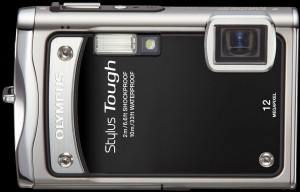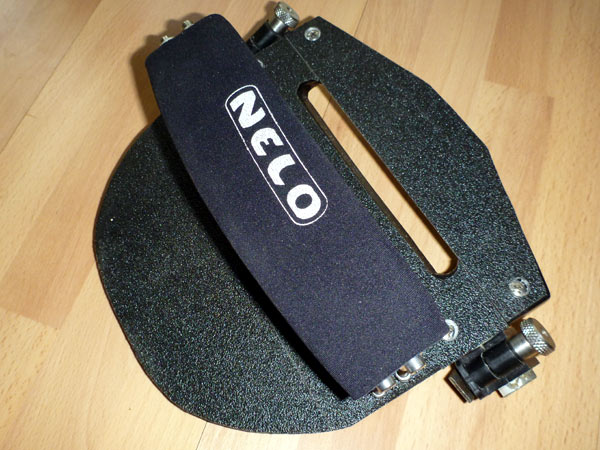Archive for February, 2012
Posted by Greg on
February 23, 2012
Q: Can I mount an ONNO foot bar in my NDK Greenlander pro?
Is there enough room for the knees to bring my feet into a centered position?– J P Meyenberg
A: JP, I have an ONNO carbon foot bar (foot plate) mounted in my NDK Greenlander Pro and love it. For those who aren’t familiar with it, the ONNO foot bar is a very lightweight, wide carbon plate that mounts to your existing Yakima pedals (stock installation is with screws). The hardware is provided to modify your current Yakima aluminum rails so that they are parallel so that the solid foot plate can be adjusted fore/aft without binding.
I have size 10 feet and have just enough room to bring feet and knees to a centered position in the keyhole cockpit. There isn’t a lot of clearance, my knees can fit only when they are very close together, about an inch apart. For more clearance you could modify the thigh hooks (grind them away a bit). In this centered, racing-style position, I can generate more torso-rotation than in the “splayed-out” position. Read more... (434 words, 0 images, estimated 1:44 mins reading time)
Posted by Greg on
February 19, 2012
Q: How hard is it to paddle around with a camera in the cold? I’d love to do a shoot somewhere with the ice and water. Some of your pictures are amazing. — Donna.
A: Donna, Thanks for the complement. All of the kayaking images that I have taken in the last few years have been with the new breed of “waterproof/shockproof” point and shoot digital cameras. These cameras don’t offer quite the image sharpness and features of more “professional” cameras, but their strength is that you can grab them in an instant and capture images that would go missed with a much bulkier camera or a camera that must be retrieved from a dry box. Most of the images for my Sea Kayaker magazine articles were taken with a waterproof digital, so very good results are possible.
 I have used the Olympus Stylus series (e.g. Stylus 1030 SW) extensively, but lately I have been using a new Panasonic Lumix DMC-TS3. Both are great cameras. The Olympus has a sliding closure that covers the lens after you turn off the camera. I have a love-hate relationship with this feature. Usually it works great, and keeps the lens clean and dry, however if you do manage to get water behind it, it continues to smear water on the lens every-time you turn on the camera, even if you dry the lens. Read more... (612 words, 2 images, estimated 2:27 mins reading time)
I have used the Olympus Stylus series (e.g. Stylus 1030 SW) extensively, but lately I have been using a new Panasonic Lumix DMC-TS3. Both are great cameras. The Olympus has a sliding closure that covers the lens after you turn off the camera. I have a love-hate relationship with this feature. Usually it works great, and keeps the lens clean and dry, however if you do manage to get water behind it, it continues to smear water on the lens every-time you turn on the camera, even if you dry the lens. Read more... (612 words, 2 images, estimated 2:27 mins reading time)
Posted by Greg on
February 12, 2012
Q: You have stated that the Greenland Paddle (GP) can act as a wing when the GP is used in a high wing type stroke. Have you done a test in your fast kayak, GP vs wing to determine advantages of one or the other with respect to efficiency and/or speed in non racing situations, eg., outings from 5 to 15 miles?
I have acquired both a wing (Onno) and a GP (Novorca) in the last year and have been learning both. At 4.2 kts, my traveling speed, the GP feels more efficient, but I can go at least 0.2 kts faster with the wing. Jerry
A: Jerry, Although I realize that you said non-racing situations, let me use that as an example, first, as it helps to clarify the issue.
To generalize, a racer is often trying to maximize speed over distance usually with an extremely light, unladen kayak. A sea kayaker is often trying the maximize the number of “miles per Snickers bars”, often with a heavy or gear-laden kayak, day after day. These are related, but are very different things and need to be viewed separately. Read more... (1200 words, 4 images, estimated 4:48 mins reading time)
Posted by Greg on
February 3, 2012
Q: What would you suggest to someone who wants to unlearn unwinding before the catch and start to get good muscle memory for catch before unwinding.
Because the kayak is already moving I find myself unwinding – irresistibly! ;-( before catch. Apart from visualizing spearing a salmon, do you have other advice, tips, tricks, dry/ wet exercises etc to catch before unwinding?
A: When I do video analysis of students a common error is unwinding before the catch, or in other words, starting to apply power before the paddle is completely buried. This is a common power leak.
If you are “pulling” before the paddle is planted, not only is your stroke shortened (giving you less time to generate power), but the catch is often poor too (drawing air into the water — ventilation, and creating turbulence and making noise — “plop!”).
How short is a “model” stroke? For a wing you should be starting your exit when the blade reaches your knees and the blade should exit when your hand reaches your hip. Since the stroke is so short, you can’t afford to waste any of it. A Greenland paddle also exits when your hand is at your hip, but the blades are long, and will exit behind you. Read more... (655 words, 0 images, estimated 2:37 mins reading time)
Posted by Greg on
February 1, 2012


My latest DIY project was to create a full footboard to replace the skimpy original on my K1 (right).
This was a relatively quick and inexpensive project. First task was to make a cardboard pattern to determine the size and fit. For the construction I used 1/2″ (12.7mm) thick birch plywood, but it’s stronger than it needs to be, 3/8″ (9.5mm) thickness would be fine, and would save a little weight.
The only challenging part of the operation was to cut the slot for the tiller bar (rudder control) as this needs to be cut at the same angle as the slope of the footboard or the tiller will stick. My approach was to drill two holes at each end of the slot using an old-fashioned bit-brace (hand drill) with a bit the same diameter as the intended slot. To get the angle right, I placed a sliding T bevel set at 60 degrees on the stock and just eyeballed it as I drilled. A sabre saw with an adjustable base (set to 60 degrees) made quick work of cutting the waste from the slot. Read more... (968 words, 3 images, estimated 3:52 mins reading time)



